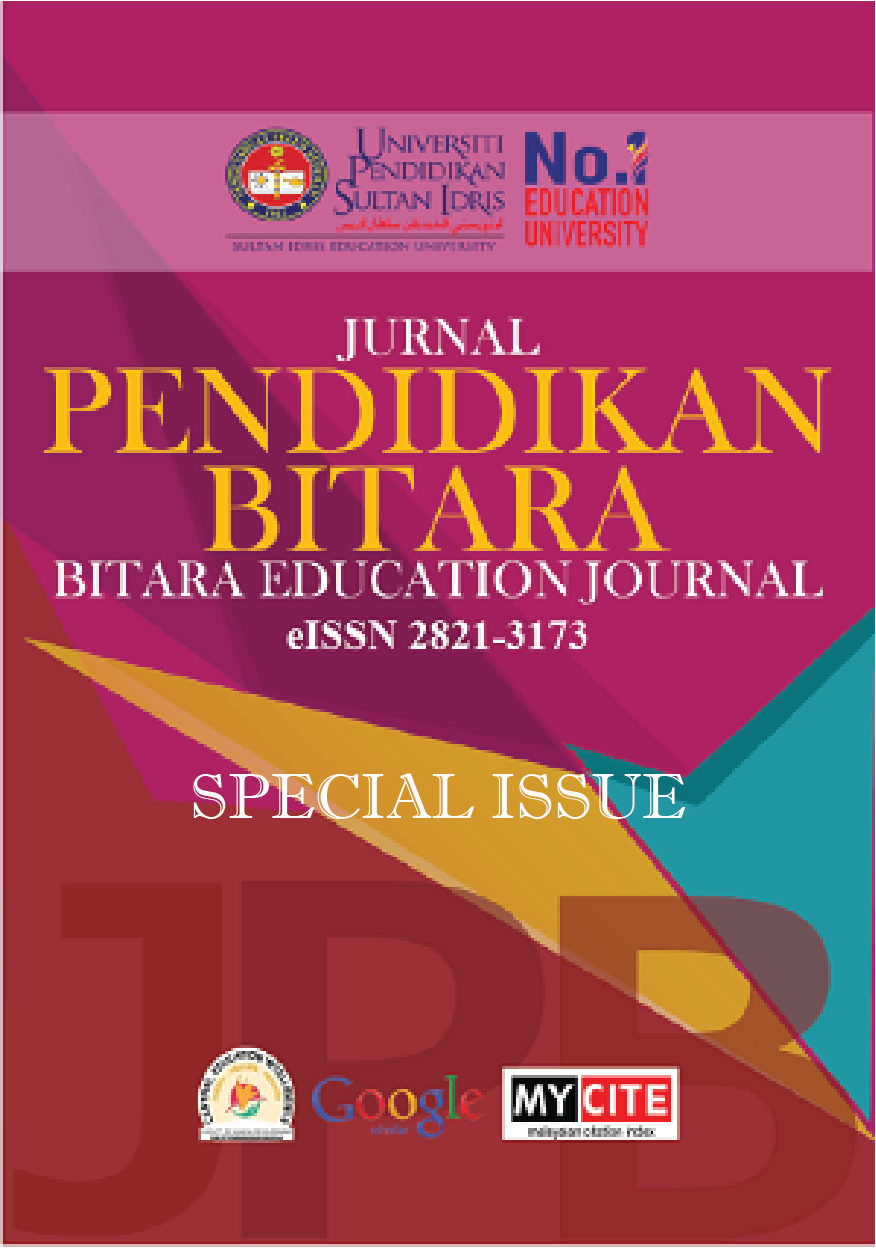Puppetry-Based Learning and Children’s Holistic Development
DOI:
https://doi.org/10.37134/bitara.vol15.sp.1.2022Keywords:
Puppetry-Based Learning, Children Holistic DevelopmentAbstract
Puppetry in early childhood care and education enhances and entices children to participate in play and learning activities. Children learn a variety of skills, knowledge, think creatively and develop their talents and experiences. The purpose of the study is to draft a puppetry-based learning conceptual framework and the perception of early childhood educators on the application of puppetry-based learning, which encompasses puppet crafts, pretend play with puppets, puppet shows and storytelling with puppets, the purpose being to enhance children’s holistic development. One hundred early childhood educators were selected from the government and private early childhood centers around Kuala Lumpur. The research data were collected through a questionnaire survey and were analysed using independent sample t-test and one-way ANOVA. Results showed that early childhood educators have a positive perception towards the usage of puppets in supporting children’s creativity and imagination, intellect, language and communication, social and emotions, physical, moral, spirituality and values development. The findings of the study supported the hypotheses that the perception of early childhood educators according to the status of center and experience in care and education at the early childhood center were not significant. Early childhood educators have a positive perception of the application of puppetry-based learning in supporting children’s holistic development. Puppetry-based learning has given a positive impact based on the puppetry activities to be used in supporting children’s holistic development. Educators, parents, resident artists and curriculum developers play an important role in promoting and preserving puppetry-based learning.
Downloads
References
Abdul Khalek, A. (2019). Exploring The Use Of Project-Based Learning On Student Engagement At Taylor’s University, Malaysia (12 - 20). Jurnal Pendidikan Bitara UPSI, 5(1), 12-20. Retrieved from https://ejournal.upsi.edu.my/index.php/JPB/article/view/2403
Caganaga, C. K., & Kalmis, A. (2015). The role of puppets in kindergarten education in Cyprus. Open Access Library Journal, (2), 1-9.
Compton, B. (2016). Children use art, puppetry to express themselves. Health Progress, 86-87.
Hikmah Nur Insani. (2017). The use of puppet in teaching speaking to young learners. Proceeding of the CONAPLIN and ICOLLITE, 683-688).
Ivon, H. (2014). Features of children’s play and developmental possibilities of symbolic puppet play. Croatian Journal of Education, 16 (1), 161-180.
Korosec, H. (2012). Playing with puppets in class-Teaching and learning with pleasure. In Kroflin, L. (Eds.). The power of the puppet (pp. 29-45). Zagreb: The UNIMA Puppets in Education, Development and Therapy Commission.
Korosec, H. (2013). Evaluating study of using puppets as a teaching medium in Slovenian schools. Sk. Vjesn., 62(4), 495-520.
Kroflin, L. (2012). The role of puppet in language teaching. In Kroflin, L. (Eds.). The power of the puppet (pp. 46-62). Zagreb: The UNIMA Puppets in Education, Development and Therapy
Kroger, T., & Nupponen, A-M. (2019). Puppet as a pedagogical tool: A literature review. International Electronic Journal of Elementary Education, 11 (4), 393-401.
Loy Chee Luen, Nordin Mamat, Nor Mashitah Mohd Radzi & Sopia Md Yassin. (2017). Observation instrument to evaluate early childhood educator’s teaching strategies using creative arts. International Journal of Academic Research in Business and Social Science, 7 (4), 2222-6990.
Loy, C. L. (2021). Puppetry activities in early childhood programmes. Southeast Asia Early Childhood Journal, 10, 89-96. https://doi.org/10.37134/saecj.vol10.sp.8.2021





